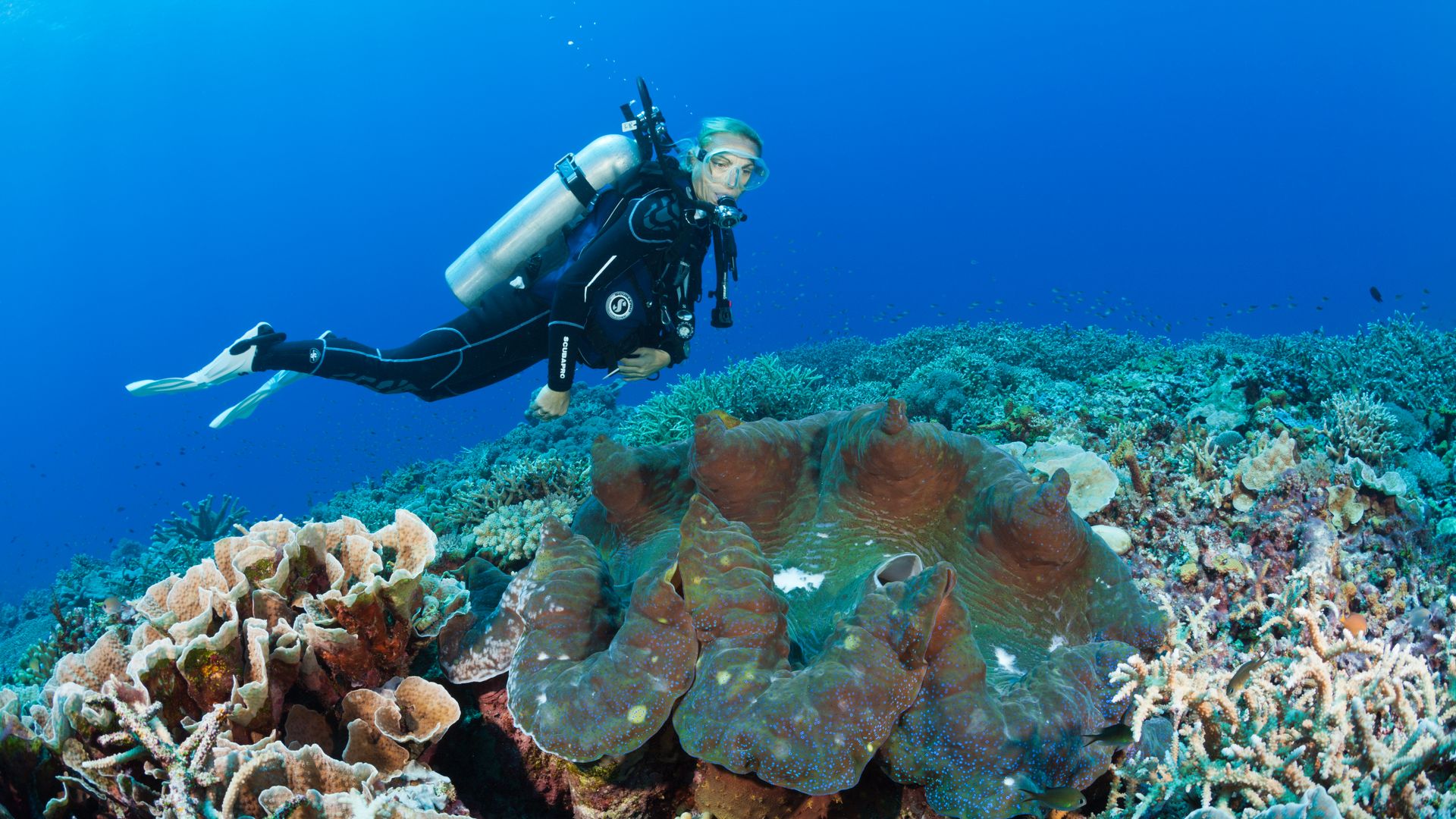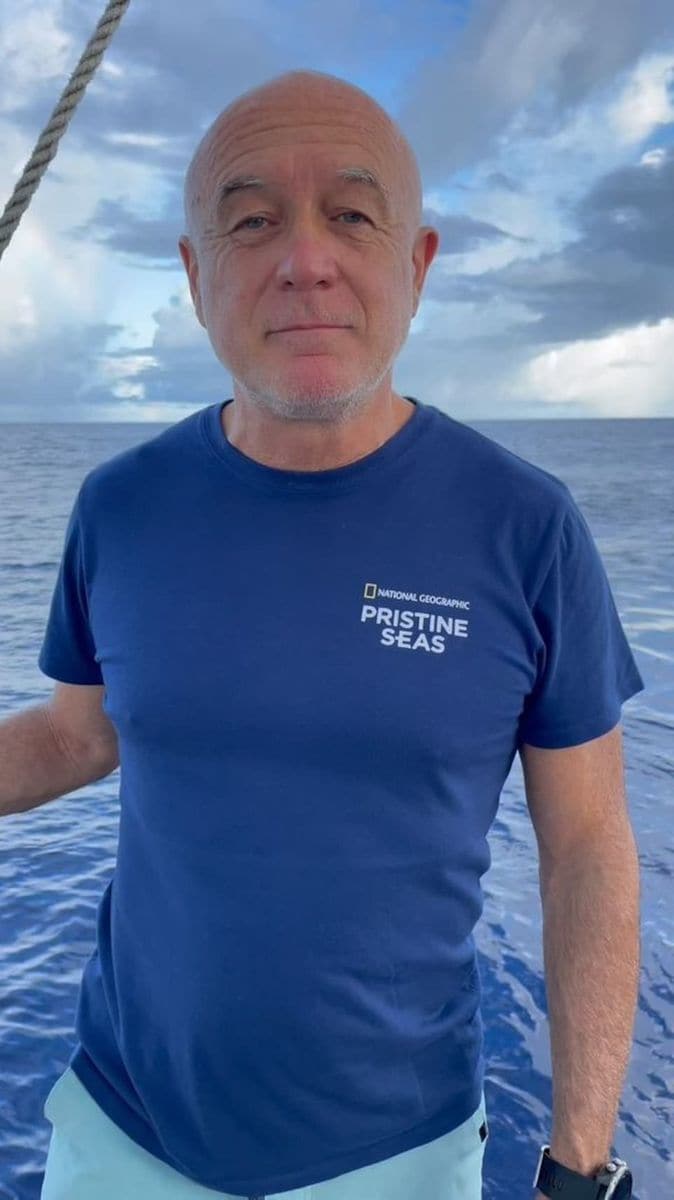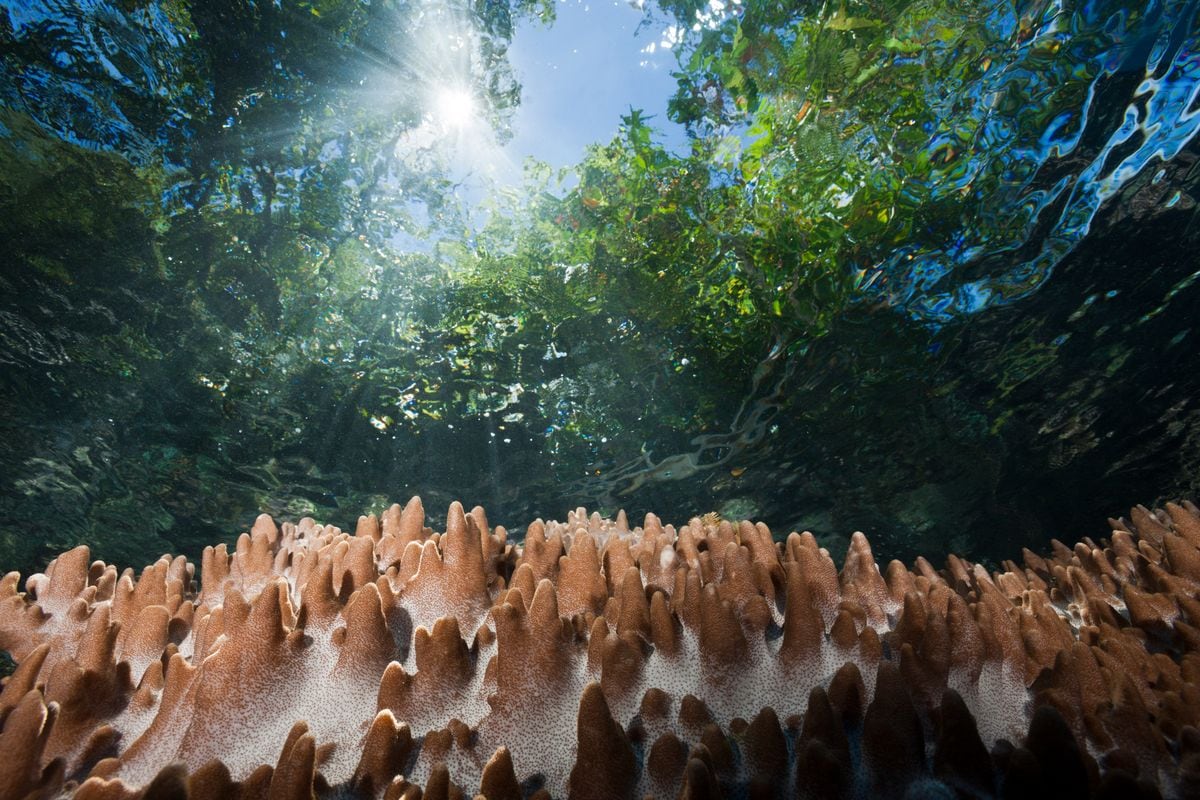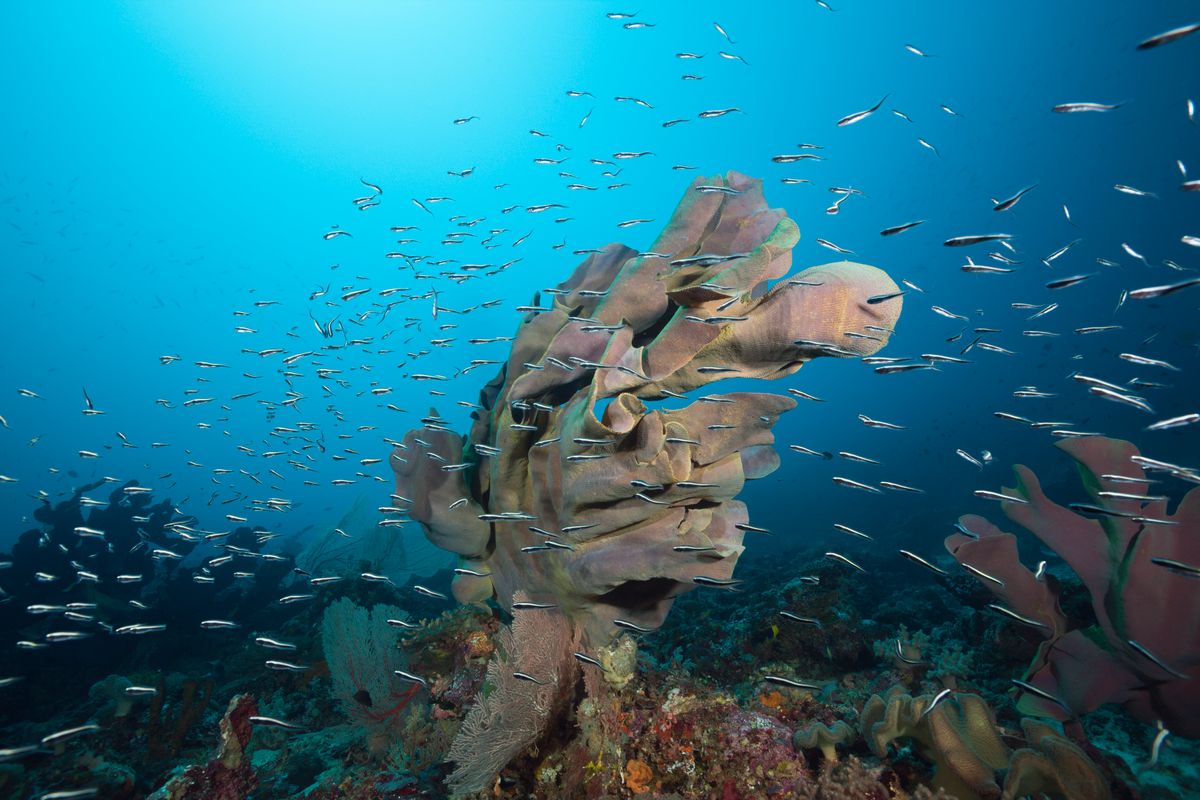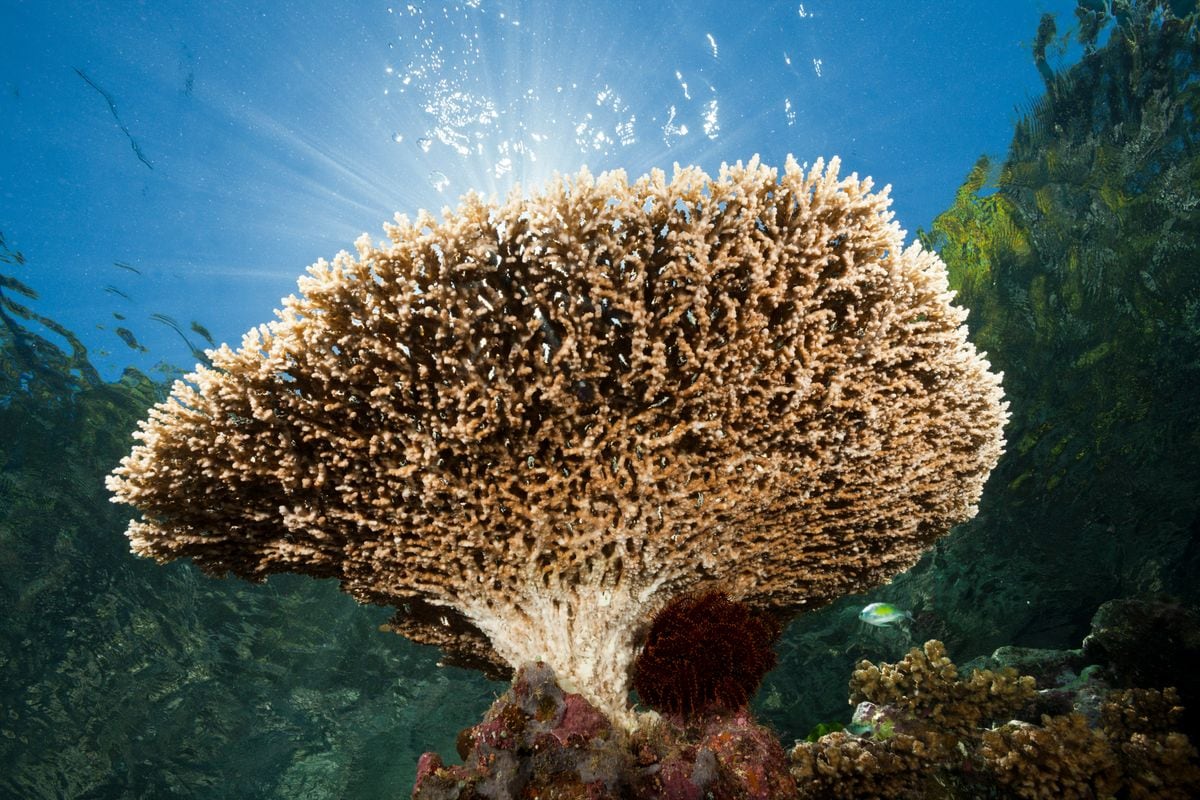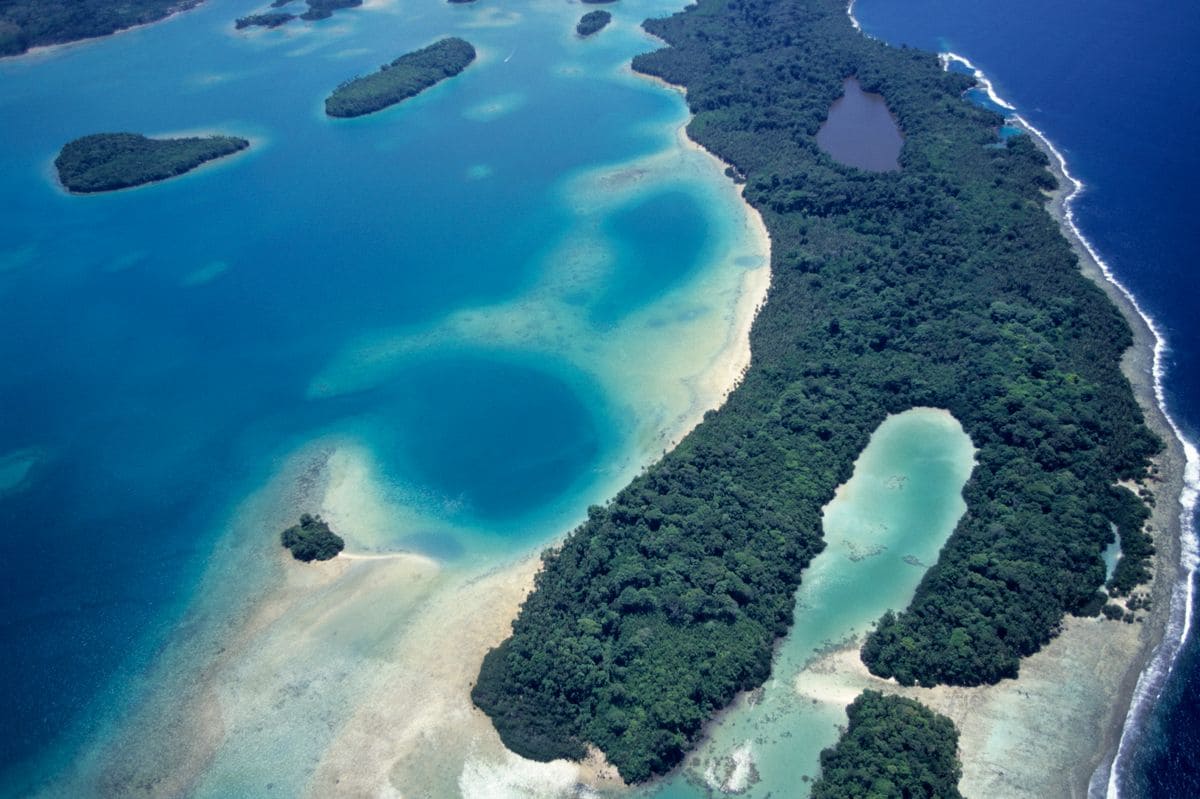The ocean floor is unfathomable. Even though we know a lot about it, it is clear there is still so much left to discover. Many deep-sea discoveries actually occur by accident or while looking for something else. Just ask marine biologist and photographer Manu San Félix, who dove into the waters of the Solomon Islands near Malaulalo Island to document a shipwreck that appeared on the maps. But when he went down, what he found defied all logic. “I saw something, called my partner, and we went deeper,” he said. It was not a ship; it was a living underwater cathedral.
One Year Since the Discovery
Exactly a year has passed since National Geographic's Pristine Seas team reported the discovery of the largest coral colony ever recorded in October 2024, an organism that has endured for centuries while remaining hidden from view.
Bigger Than a Blue Whale
Measurements confirmed the scale of the discovery. This megacoral, of the species Pavona clavus, measures 34 meters wide, 32 meters long, and nearly 6 meters tall. It is longer than a blue whale and so large it can be seen from space. To put it in perspective, it is about half the size of a soccer field and as tall as a two-story building.
A Single Living Organism
But the most astonishing part is not its size but its nature. It is not a reef, which is made up of many colonies, but a single organism composed of nearly a billion genetically identical polyps that function as one being. The previous record, documented in American Samoa in 2019, falls far short of this giant.
“This Was Here When Napoleon Was Alive”
Scientists used the coral’s height to estimate its age. It is between 300 and 500 years old. That means it began forming sometime between the 16th and 17th centuries. It has survived the U.S. Declaration of Independence, World War II, and the COVID-19 pandemic. “It’s very moving,” San Félix said. “I thought, wow, this was here when Napoleon was alive.”
A Fortuitous Discovery
The discovery was truly accidental. The team discovered it on the eve of their planned relocation to a different location. Even though it was only 13 meters deep, its rocky appearance and the lack of diving equipment in the local community kept it hidden, leading people to mistake it for a simple giant rock.
A Beacon of Hope Against Climate Change
The discovery comes at a critical time. The effects of global warming are severe. According to the National Oceanic and Atmospheric Administration (NOAA) and other sources, the global bleaching event that began in 2023 is already affecting about 83 to 84 percent of the world’s coral reef areas. The International Union for Conservation of Nature (IUCN) warns that 44 percent of warm-water corals are at risk of extinction.
However, while the reefs near this giant showed signs of degradation, this megacoral is in excellent health. Scientists believe its location in slightly deeper, cooler waters, protected by a slope, may be the key to its resilience. “It’s like discovering the tallest tree on the planet, but in the ocean,” said Enric Sala, founder of Pristine Seas. He added, “Seeing this large oasis of healthy coral in deeper waters is a beacon of hope.”
A Living Time Capsule
This organism has become a living time capsule. Studying it could reveal secrets about how corals adapt and survive ocean acidification and warming, offering vital clues for conservation. It also serves as a crucial habitat for fish, crustaceans, and other marine species, strengthening its ecological role.
Despite its good health, the coral is not immune. Deforestation in the Solomon Islands causes pollution that harms reefs, and global warming remains the main threat. “We’re still here. Don’t forget about us,” said researcher Molly Timmers, as if the coral itself were speaking.
